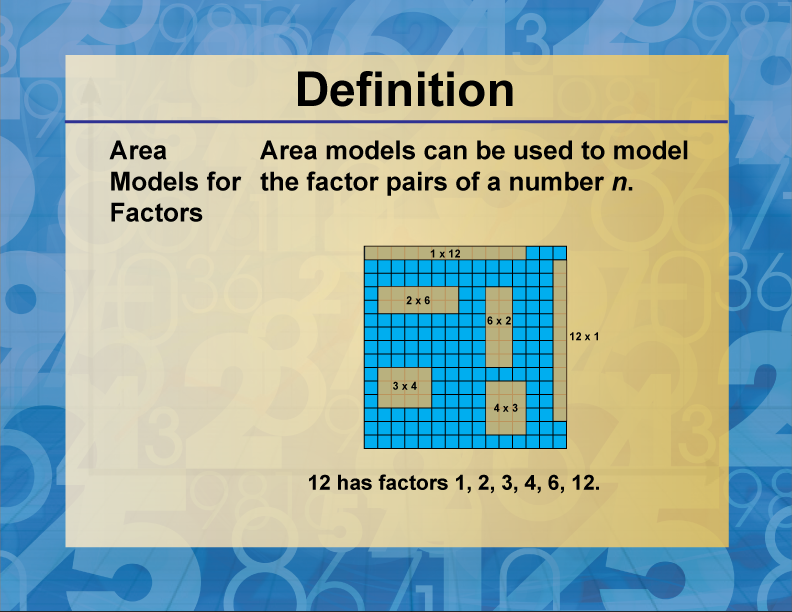
Display Title
Definition--Factors and Multiples--Area Models for Factors
Display Title
Area Models for Factors

Topic
Factors and Multiples
Definition
Factors are numbers that divide another number without leaving a remainder, while multiples are the result of multiplying a number by an integer.
Description
Understanding factors and multiples is crucial in mathematics, particularly in number theory and algebra. Factors are the building blocks of numbers, representing the integers that can be multiplied together to produce another number. For example, the factors of 12 are 1, 2, 3, 4, 6, and 12. Multiples, on the other hand, are the product of a number and any integer. For instance, the multiples of 5 include 5, 10, 15, 20, and so on.
The image illustrates different area models that show the factors of 12. Area models visually represent these concepts by showing how numbers can be broken down into their factors, aiding in the understanding of the fundamental properties of numbers.
This visual representation is particularly useful in educational settings, helping students grasp the abstract concepts of factors and multiples through concrete examples. By using area models, learners can see the relationships between numbers and better understand the distinction between prime and composite numbers. This foundational knowledge is essential for more advanced mathematical concepts, including greatest common divisors, least common multiples, and simplifying fractions.
For a complete collection of terms related to factors and multiples click on this link: Factors and Multiples Collection.
| Common Core Standards | CCSS.MATH.CONTENT.3.OA.B.6, CCSS.MATH.CONTENT.4.OA.B.4, CCSS.MATH.CONTENT.6.NS.B.4, CCSS.MATH.CONTENT.HSA.SSE.A.1, CCSS.MATH.CONTENT.3.NBT.A.3, CCSS.MATH.CONTENT.4.NF.B.4.A |
|---|---|
| Grade Range | 3 - 8 |
| Curriculum Nodes |
Algebra • The Language of Math • Numerical Expressions |
| Copyright Year | 2021 |
| Keywords | multiples, factors, definitions, glossary term, factor |